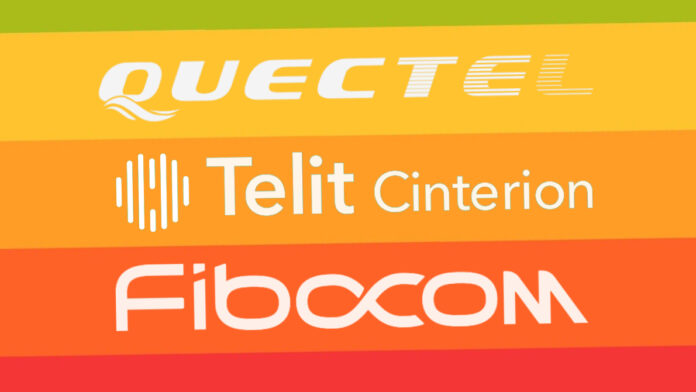Quectel, Telit Cinterion, and Fibocom captured more than half of the total cellular IoT module shipments in the first quarter of 2023, according to market analysis from Counterpoint Research. Quectel remained the leading vendor; Telit Cinterion climbed to second. Total shipments were flat compared with the same period a year ago, but more than double (100 percent higher) than the first quarter of 2020, when global Covid-19 lockdowns were kicking in.
The figures from Counterpoint Research exclude automotive and telematics modules; they include all forms of cellular from low-power NB-IoT and LTE-M (Cat-M) modules, through 2G, 4G, and 5G units. Chinese firms Quectel and Fibocom continued to dominate in their home market; Telit Cinterion, formed out of the merger Telit with Thales’ cellular IoT module business last year, performed well in the high-value North American and European markets.
Demand was spurred by solutions for smart utilities, payment terminals, and fixed-wireless access (FWA) routers and gateways; smoke detectors saw the biggest growth of any application. Demand from enterprise and industrial digital change projects was described as “soft”. A statement said: “With uncertain market scenarios, enterprises are being cautious with their expenditures. China and India registered positive growth, while the US, Latin America, Japan, South Korea, and Eastern Europe saw a year-on-year decline.”
Soumen Mandal, senior research analyst, commented “The market is going through a unique transition both regionally as well as technologically, with the two being intertwined. Low-power and low-cost technologies such as LTE-M, NB-IoT and LTE CAT-1 (and 1 bis) are seeing rapid adoption in China. This has driven a flood of chipset and module providers catering to the strong push from all the stakeholders for the adoption of cellular IoT at scale.
“On the other hand, we are seeing rapid consolidation and exits of cellular module vendors in markets outside China, where the technology adoption is fairly fragmented and varies across geographies. 5G will further drive consolidation in a couple of years. Therefore, these underlying dynamics are shaping the competitive landscape differently in China and the rest of the world.”
Quectel led the market in China as well as globally, with table-topping sales in the Americas, India, and the Middle East and Africa regions. Telit Cinterion, following its merger, bridged the gap with Quectel in international markets excluding China, said Counterpoint research. It will expand into “other high-scale markets” in the near- to mid-term, it said. Fibocom’s growth, notably with customer premise and point-of-sale equipment, saw it “stand out among the top three global players”.
Behind Quectel, Telit Cinterion, and Fibocom, the likes of Neoway and u-blox also saw growth. China Mobile, the largest IoT telecom operator in terms of connections, maintained its second position in the Chinese market for new IoT sales. Chinese vendor Unionman entered the top-five module vendors list in China on the back of “impressive performance” with NB-IoT and LTE Cat 1 bis modules.
Mohit Agrawal, associate director at Counterpoint Research, said: “The global cellular IoT module market is expected to witness subdued growth this year as the 4G/5G cellular module growth remains muted due to higher average selling prices. However, we expect the demand for cellular IoT modules to rebound in the coming years. The mass production of affordable 5G RedCap-based modules, scheduled for the end of this year, is expected to drive the adoption of 5G in the IoT module market.
“Applications such as smart meters, POS, and router/CPE solutions will play a crucial role in driving both the value and volume of the IoT module market in coming years and will be key focus segments in the near- to mid-term. In the longer term, the demand for IoT modules will be driven by massive IoT applications and the industrial segment. It is projected that IoT module shipments will grow at a compound annual growth rate of 11 percent between 2023 and 2030.”

